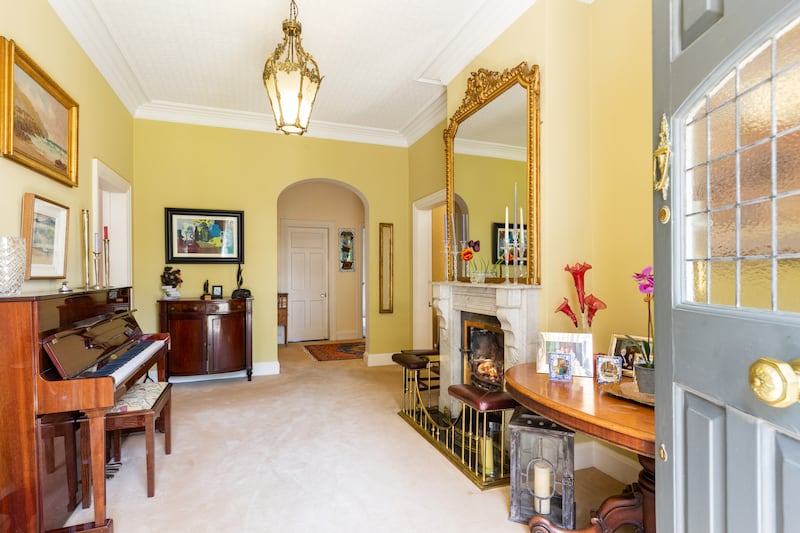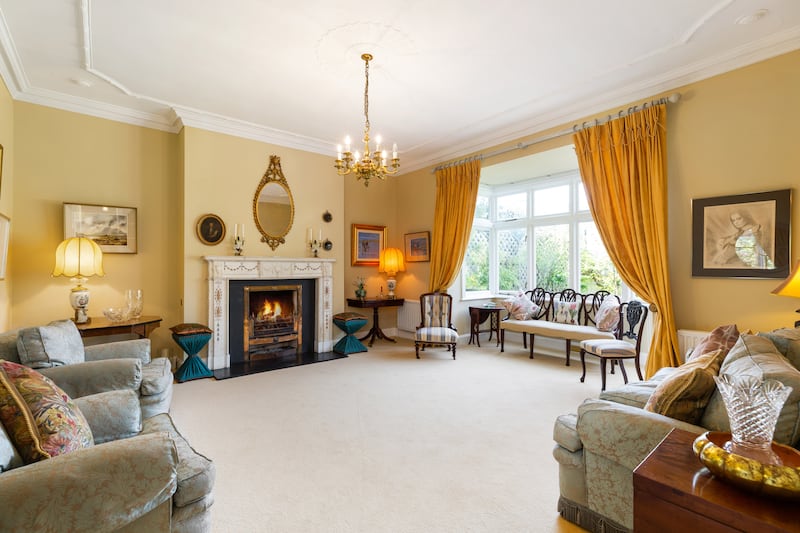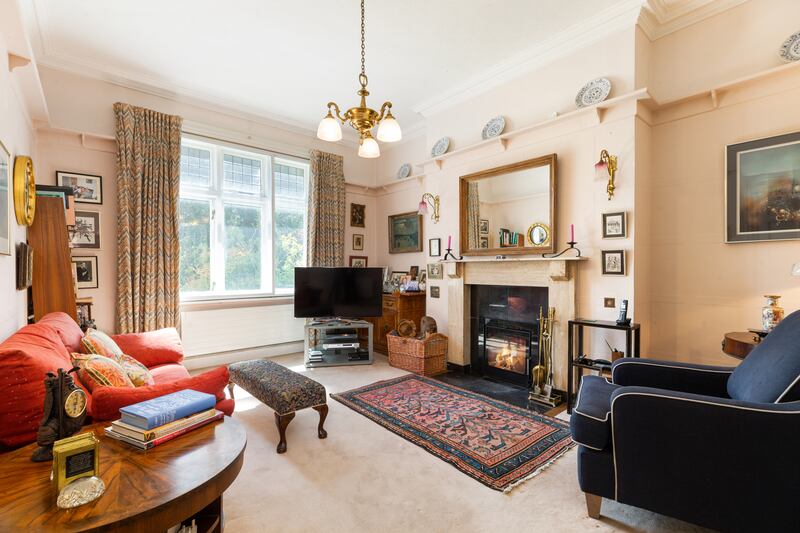Ailesbury Road has long been known as Embassy Row because so many embassies and embassy residences are located there. But it’s also popular with Ireland’s finance bosses, which accounts for the high prices that have been paid for Ailesbury properties over the past few years. Typically, new owners then spend €1 million or more to completely revamp their homes.
That’s why Sherry FitzGerald is looking for €5.75 million for 32 Ailesbury Road, Ballsbridge, Dublin 4: the 471.1sq m (5,071sq ft) semi-detached five-bed on 0.16 hectares (0.4 acres) backing on to Wanderers’ Rugby grounds was built in 1930 and has been well maintained over the years by its owners, a doctor who had his private consulting rooms there, and his wife. But it seems to be accepted wisdom in the property world that someone who can spend €5 million on a house will want to upgrade it to an A-rated modern house. An example of such a house is number 34, the other half of the semi, bought in 2019 for nearly €5 million and comprehensively upgraded and extended.
Other neighbours include the Chinese embassy’s staff residence next door and 36 Ailesbury Road, the former French embassy bought by Ryanair heir Shane Ryan for more than €4 million in 2013: he has planning permission for a revamp of the protected structure that includes a basement swimming pool and gym.


The doctor and his wife have lived in number 32 since they bought it (for £165,000) in 1984. It’s a 1930s property with the air of a Victorian period home — at some point, it seems that original 1930s mantelpieces were replaced with large marble mantelpieces in the front hall and reception rooms. It has a Ber of E2.
READ MORE
A pillared entrance porch leads to the front door, which has leaded-glass panes: it opens into a large hall where a gilt mirror hangs over the fireplace, opposite a piano. An arch at the end leads to a cloakroom and then into a toilet.
On the right of the hall, the diningroom has a wide bay window with leaded glass panes at the top overlooking the front garden and an Adams-style fireplace; a bay window in the drawingroom, which has a matching marble fireplace, overlooks the back garden. Off the left of the hall there’s a family room overlooking the front garden with a pale stone fireplace housing an inset wood-burning stove.



The modern kitchen at the back of the house was revamped for a second time 20 years ago and has a pale stone floor, timber-topped island unit, polished black granite countertops and a cream Aga. Servants’ bells over the door, a reminder that some 1930s households had staff, still work. A door from here steps down into a side passage, off which is a utility room. A door from the front into this covered side passage used to give access to the doctor’s consulting rooms upstairs. The passage also leads to a sunroom extension at the back, one of the owners’ favourite features: it was a great asset, they say, where a lot of parties and functions were held.
There’s a bronze statue with a working lamp on the finial of the staircase, an Art Deco feature in some 1930s houses. Upstairs there are two rooms off the first return, where the doctor’s consulting rooms were: the room at the front is now set out as a home office, the one at the back — overlooking Wanderers’ grounds — as a bedroom/sittingroom.


There are five bedrooms and a family bathroom on the first floor, three doubles and two singles. The main bedroom, like the diningroom below it, has a large bay window and an en suite Jack and Jill shower room off it. Timber stairs lead up to a large attic, used for storage.
There’s lots of room in the long back garden to extend: one-third of it is a neat lawn, bordered by colourful flower beds, divided by a path that leads to a tennis court that takes up two-thirds of the space, with a small summerhouse — a traditional pavilion — at the end. There’s lots of room to park beside the lawn in the front garden.














